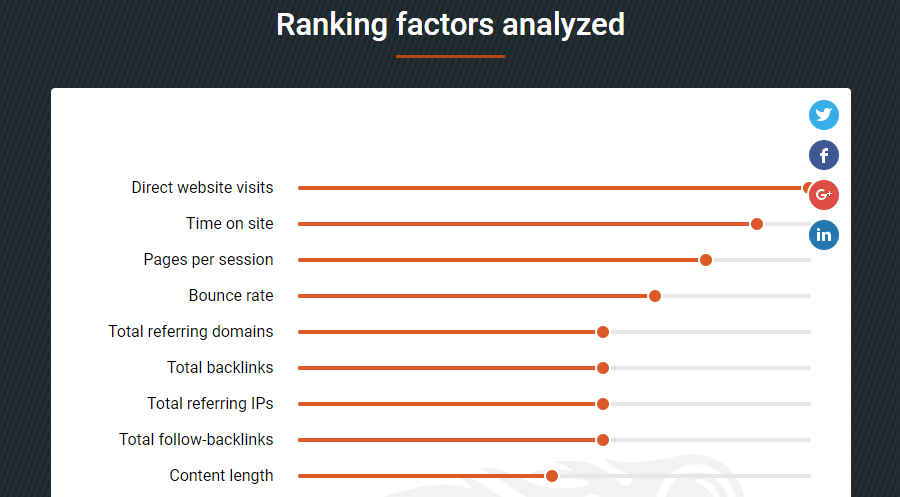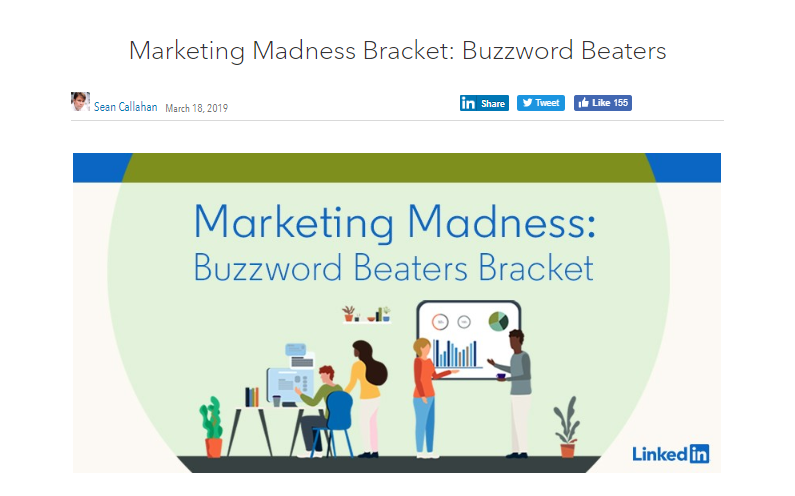
 When it comes to the craft of writing, my favorite luminary is the late William Zinsser. His book, On Writing Well, is — in my opinion — the definitive work covering its stated subject. On Writing Well is an essential read for anyone who wants to elevate their prose. Zinsser’s primary focal area is word economy. “Look for the clutter in your writing and prune it ruthlessly,” he implores. “Be grateful for everything you can throw away. Reexamine each sentence you put on paper. Is every word doing new work?” That last question is especially pertinent to B2B marketing writers. The reader should always be our top concern when penning copy, but in this case, the stakes are even higher. Attention is at a premium with business professionals, so wasted words are especially costly. Content bloat leads to audience abandonment. via GIPHY In the spirit of Mr. Zinsser, we’re offering up tips on trimming down your writing to make it more punchy and concise. And to do so, we’ll curate advice from top wordsmiths in the marketing game, with a key emphasis on overcoming the most prevalent pitfalls for today’s content creators.
When it comes to the craft of writing, my favorite luminary is the late William Zinsser. His book, On Writing Well, is — in my opinion — the definitive work covering its stated subject. On Writing Well is an essential read for anyone who wants to elevate their prose. Zinsser’s primary focal area is word economy. “Look for the clutter in your writing and prune it ruthlessly,” he implores. “Be grateful for everything you can throw away. Reexamine each sentence you put on paper. Is every word doing new work?” That last question is especially pertinent to B2B marketing writers. The reader should always be our top concern when penning copy, but in this case, the stakes are even higher. Attention is at a premium with business professionals, so wasted words are especially costly. Content bloat leads to audience abandonment. via GIPHY In the spirit of Mr. Zinsser, we’re offering up tips on trimming down your writing to make it more punchy and concise. And to do so, we’ll curate advice from top wordsmiths in the marketing game, with a key emphasis on overcoming the most prevalent pitfalls for today’s content creators.
3 Keys to Concise and Compelling B2B Marketing Copy
Rigid formats, giant blocks of text, and unnecessary filler words are banes of succinct writing. Here are some pointers from the experts on conquering them.#1 - Nix Stringent Word Counts
So many writers are at the mercy of word counts, and it’s a tragedy. We’re told we need to produce at least 1,500 words, so we inject a bunch of unnecessary filler to get there. Does this serve our audience in any way? Hell no. The conundrum is that numerous studies show higher word counts correlating with higher SERP placements. However, this is misguided thinking. Long-form content is fantastic and it’s certainly part of our mix here at TopRank Marketing, but it needs to be valuable. Don’t take my word for it; here’s what Rand Fishkin — co-founder of Moz, and one of the planet’s top authorities on SEO — has to say: “700 more words will not help you reach your goals any more than 7 more words. Create content that helps people. Do it efficiently. Never write an ultimate guide where a single image could more powerfully convey the same value. Trust me; your audience and your bottom line will thank you.” [bctt tweet="700 more words will not help you reach your goals any more than 7 more words. Create content that helps people. Do it efficiently. @randfish" username="toprank"] According to SEMrush’s hierarchy of ranking factors, content length falls below time on site, pages per session, bounce rate, and backlinks in SEO importance. In other words, if excessive wordiness is turning readers away, the number doesn’t really matter all that much. Delivering a quality experience is vastly more valuable. To see what high-performing short-form content looks like in action, check out these examples from IFL Science, courtesy of BuzzSumo.
In other words, if excessive wordiness is turning readers away, the number doesn’t really matter all that much. Delivering a quality experience is vastly more valuable. To see what high-performing short-form content looks like in action, check out these examples from IFL Science, courtesy of BuzzSumo.
#2 - Use Every Bit of Space Intentionally
It might not be a writer’s first instinct, but visualization is a helpful practice. Take a step back and look at your content — how it really appears on the page. Are you making the best use of your digital real estate? Ann Handley suggests we take a page from the lead character in Charlotte’s Web, who she says might be the best content marketer in the world: “Think of how Charlotte was able to save a life with just [a few] words,” Handley said during a session at Content Marketing World a couple years back, as relayed by our own Caitlin Burgess. “How can we use our words more intentionally? How can we make a difference?” [bctt tweet="How can we use our words more intentionally? How can we make a difference? @annhandley @MarketingProfs" username="toprank"] Think of each page on the worldwide web as a finite spider web. You only have so much space, and so much thread, to get your points across. Make it count. You might not be saving the life of a radiant pig, but you will be more likely to delight and connect with your audience.#3 - Banish Buzzword Banality
To celebrate the NCAA Tournament earlier this year, our friends and clients at LinkedIn Marketing Solutions* put together a lighthearted marketing madness bracket, calling out the most overused jargon in the profession. If you find yourself leaning too heavily on any terms listed there, you might want to rethink. It’s not just marketing buzzwords that drag down our copy, though. Content Marketing Institute (CMI)* recently published a rundown of 25 words and phrases to avoid. “Stuffing your sentences and paragraphs with filler and fluff — words and phrases that add zero meaning to what you’re trying to say — is the opposite of clear writing,” author Julia McCoy writes. Many of the items she includes are extremely common, and the types you’re likely to summon out of sheer habit and routine. For instance:
It’s not just marketing buzzwords that drag down our copy, though. Content Marketing Institute (CMI)* recently published a rundown of 25 words and phrases to avoid. “Stuffing your sentences and paragraphs with filler and fluff — words and phrases that add zero meaning to what you’re trying to say — is the opposite of clear writing,” author Julia McCoy writes. Many of the items she includes are extremely common, and the types you’re likely to summon out of sheer habit and routine. For instance:
- In order to
- Really
- That
- Then
- Just
Writing Well (Usually) Means Writing Less
To be clear, long-form writing isn’t always unnecessarily drawn out. In many cases, exploring the full breadth of a subject requires it. Recently I wrote about the example of Backlinko’s Brian Dean, who puts together massive power pages spanning thousands of words. These posts rank and perform so well not because of their word counts, but because of what those words accomplish: they comprehensively break down important topics and provide credibility-building best-answer content for his audience. If you scan through one of these pages, you’ll find the copy is actually quite sparse in its arrangement, divvied into small chunks and broken up by plenty of visuals.The Final Word
- Forget word counts — maximum or minimum. Write as much as it takes to deliver a satisfying best answer, and no more.
- Be mindful of space on the page. Keeping in mind that a majority of users don’t make it very far into online articles, consider leading with your most critical points, or even offering a brief summary atop each new piece of content.
- And before you hit publish, challenge yourself to delete every single word throughout that isn’t tied to a specific, tangible purpose. You might even consider printing out the jargon lists from LinkedIn and CMI as references for your cleaning.
The post Less Is More: Time to Cut Content Bloat & Create Content Connections appeared first on Online Marketing Blog - TopRank®.
from Online Marketing Blog – TopRank® http://bit.ly/2VaXIP9
via IFTTT
seo ajansı
ReplyDeletehttps://www.instatakipci.com/seo